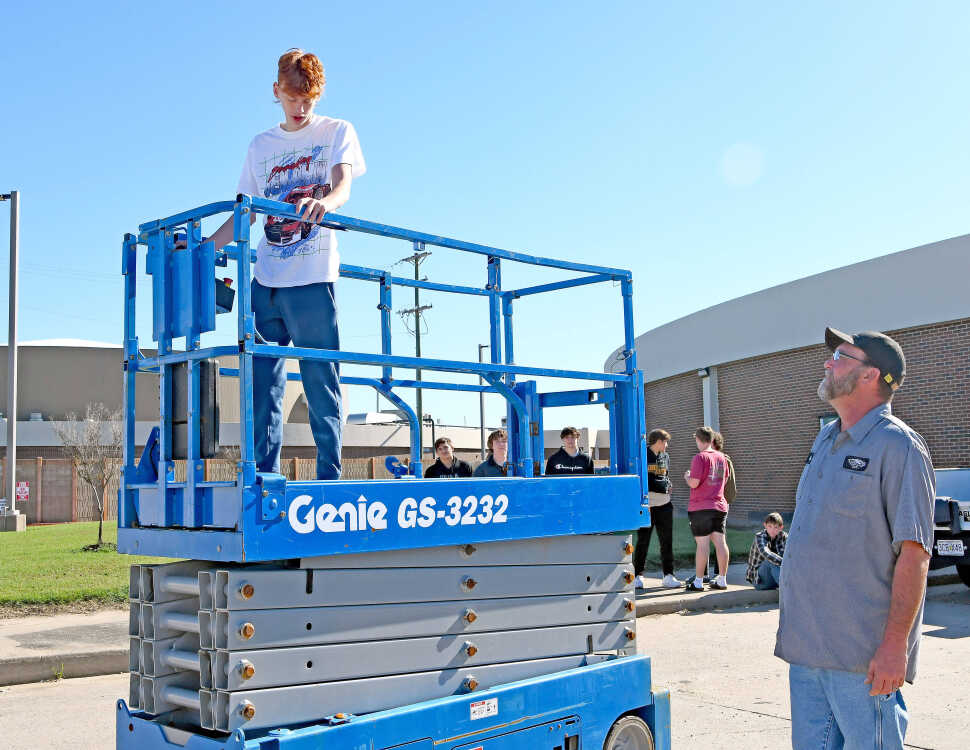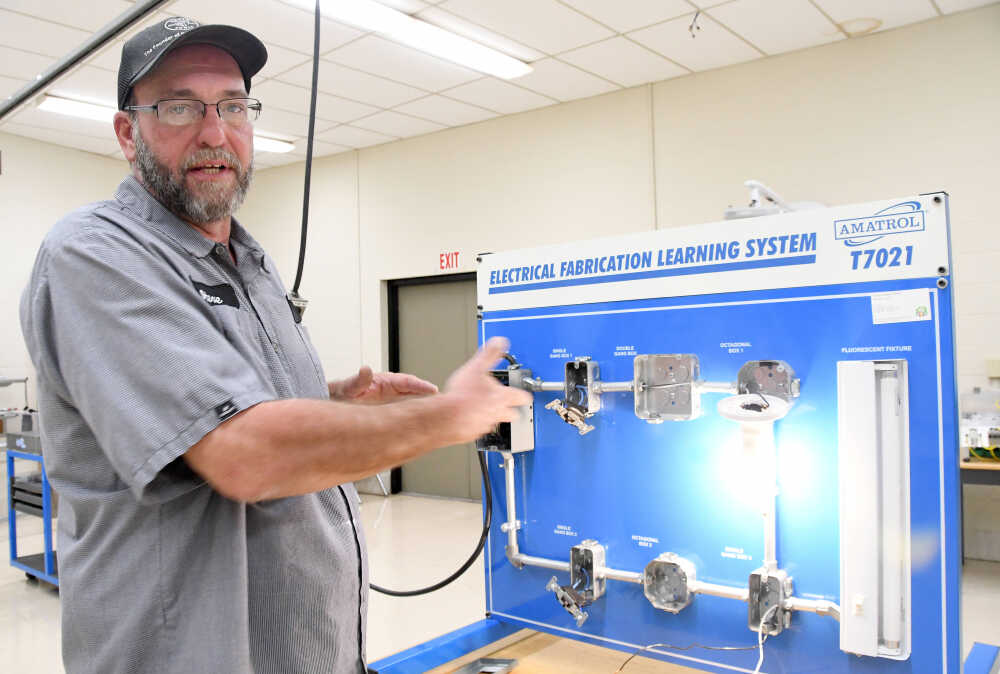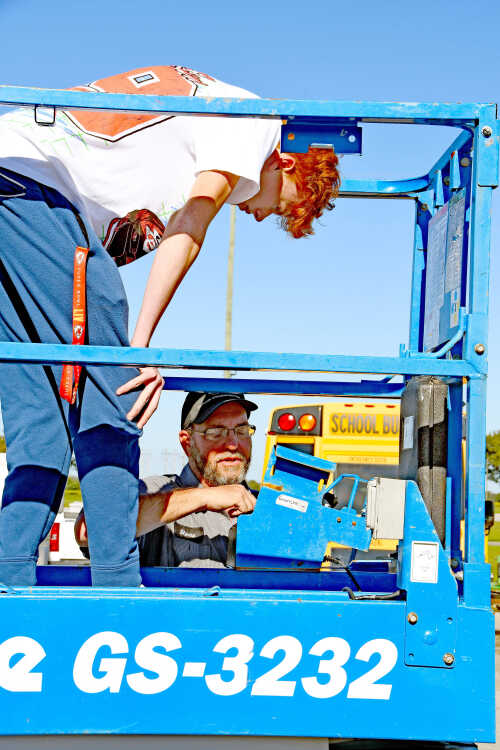Electrician course provides a pathway to the work force

NEW MADRID, Mo. — According to the Bureau of Labor Statistics, employment of electricians is projected to grow 11 percent from 2023 to 2033, much faster than the average for all occupations.
Those statistics don’t come as a surprise to students in Steve Clark’s Electricians Pathways class at the New Madrid County R-1 Technical Skills Center. In his introduction to students about his class, Clark tells them as long as they are willing to do the work there are plenty of well-paying jobs waiting for them.
But there is also plenty to learn.

Although Clark describes his Electricians Pathways class as hands-on, his students spend their first three months studying safety. They learn everything from how to work in confined spaces to lock-out, tag-out procedures.
“I have a very strict safety course,” he said. “I don’t need them to memorize it, I have to have them know it. What I teach them, they will use everyday. This is the one thing that is going to keep them from accidents so they can come home every day.”
Once they understand how to work around machinery and electricity safely, they are ready for the next steps.

First year students learn the basics of electricity and circuits. They learn how to run conduit and the names of materials.
As they take on projects, Clark has students research the guidelines required by the National Fire Protection Agency to ensure work meets code and legal requirements.
According to Clark, the projects his classes have tackled over the past six years are what they enjoyed the most. His students have converted fluorescent to LED lighting at the Central High School and TSC buildings by removing the ballasts, rewiring the fixtures and replacing the bulbs.
An air-conditioning unit was converted to also provide heating. When any new equipment arrives, the class assists the maintenance department by determining the correct wire size and breakers needed, runs the conduit and ensures all work is up to code.
“They get a certain amount of pride when they do it. Once you get pride in your work it just increases the amount that you want to do it,” Clark said. “The kids get excited when they walk through the school and see the work they have done.”
The class also covers the use of forklifts, scissor lifts and boom lifts. This past summer, three of his students who earned their forklift certification were hired for summer jobs with a Sikeston industry, Clark pointed out.
Annually, Clark meets with representatives from regional industries. He asks them what their companies are looking for from their electricians and what new improvements and equipment electricians need to be aware of then incorporates that information into his classes.
The varied projects and training also introduce students to the variety of the jobs available to electricians.
“Once I build that foundation, they can grow on it in the field they want to go into. I encourage them to go into something where not only are they going to make money but it is going to challenge them so they don’t get bored,” he said. “The electrical field challenges you every day. There is a vast amount of knowledge you have to have to do electrical. It keeps them on their toes. It keeps them wanting to come back for more. It is never boring.”
Clark, who worked 30 years as electrician in a maintenance, said whether his students decide their pathway is residential, commercial, industrial or they want to be a lineman, it all requires a basic knowledge of electricity. While some of his students will go directly into the workforce, Clark said he typically encourages them to attend two years of a trade school or to serve an apprenticeship. Last year he estimated 16 of his 20 students opted to do something in the electrical field following graduation.
Andrea Harris, TSC director, said Clark not only assists in placing his students in various jobs, technical schools and apprenticeships following graduation but also stays in touch with them.
“He is always checking in on them even years after they graduate, seeing where they are at or how they getting are on on the job,” she said. “This is a great class and he is an awesome teacher. We want to keep building on it, keeping it full so the students can return and work here in the different areas of the electrical field.”
Second year Electrician Pathways student J.J. Cullum is already talking up the class and his teacher to his fellow students from Risco High School, one of the area schools served by the TSC.
After his first year in the program, Cullum went from working at McDonald’s to using his classroom skills on heating and cooling systems this past summer. For his senior year he attends his electrician class each morning then works in the afternoon for a Sikeston company.
“Now I am applying what I learned this summer as well as what Clark’s is teaching to my new job. I’m actually wiring up a warehouse right now,” Cullum said. “(Electricity) is complicated. It will make you use your brain. But once you figure it out it is one of the best fields you can have. It is something I love doing.”
That is the enthusiasm Clark said he works to bring to all his students.
“The main thing is getting them focused and getting them excited about a job. Once you get them excited, they ride it. They get in and they want to learn,” he said. “That excitement is hard to bring to a classroom but here I believe we have achieved that.”

